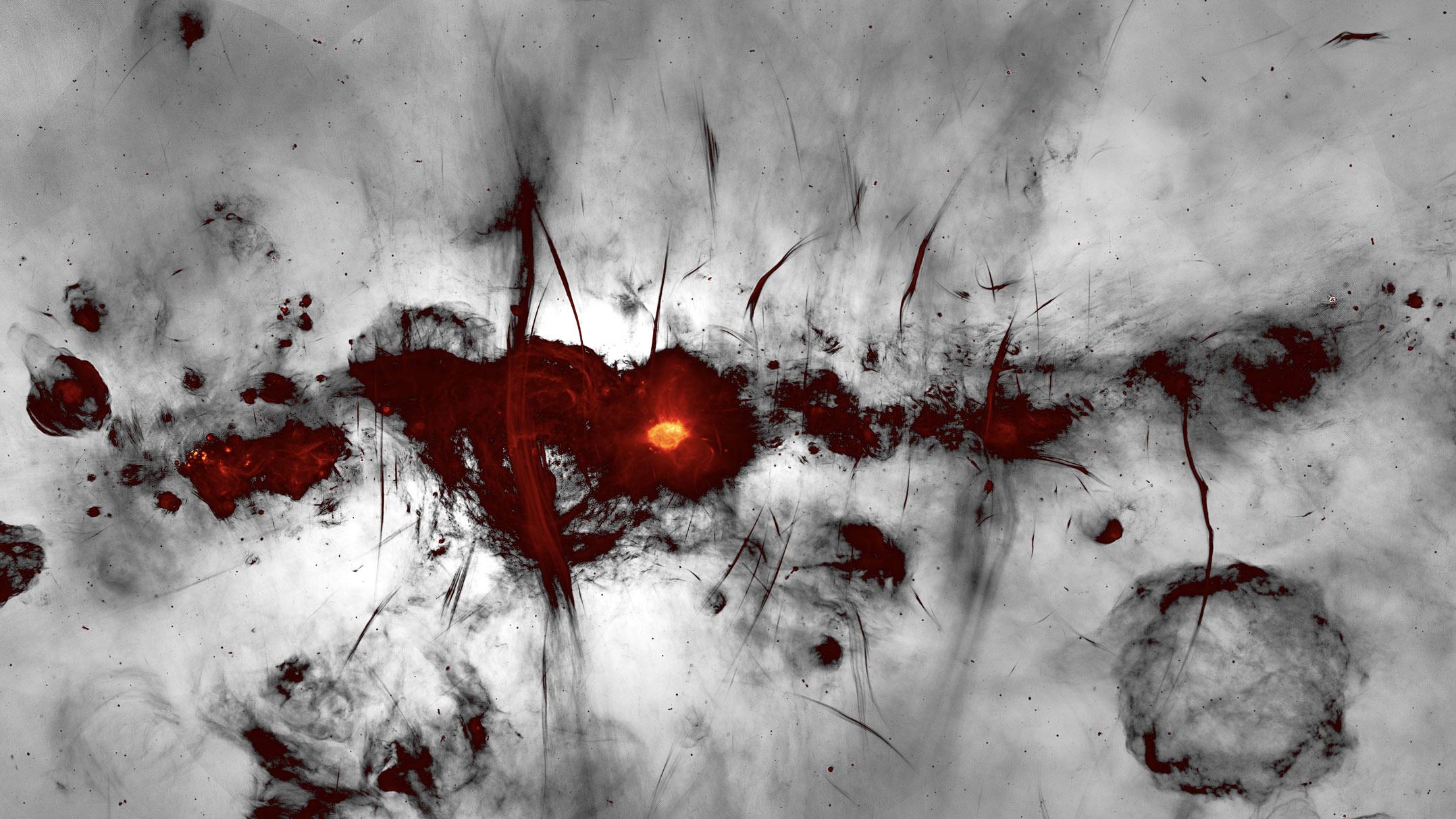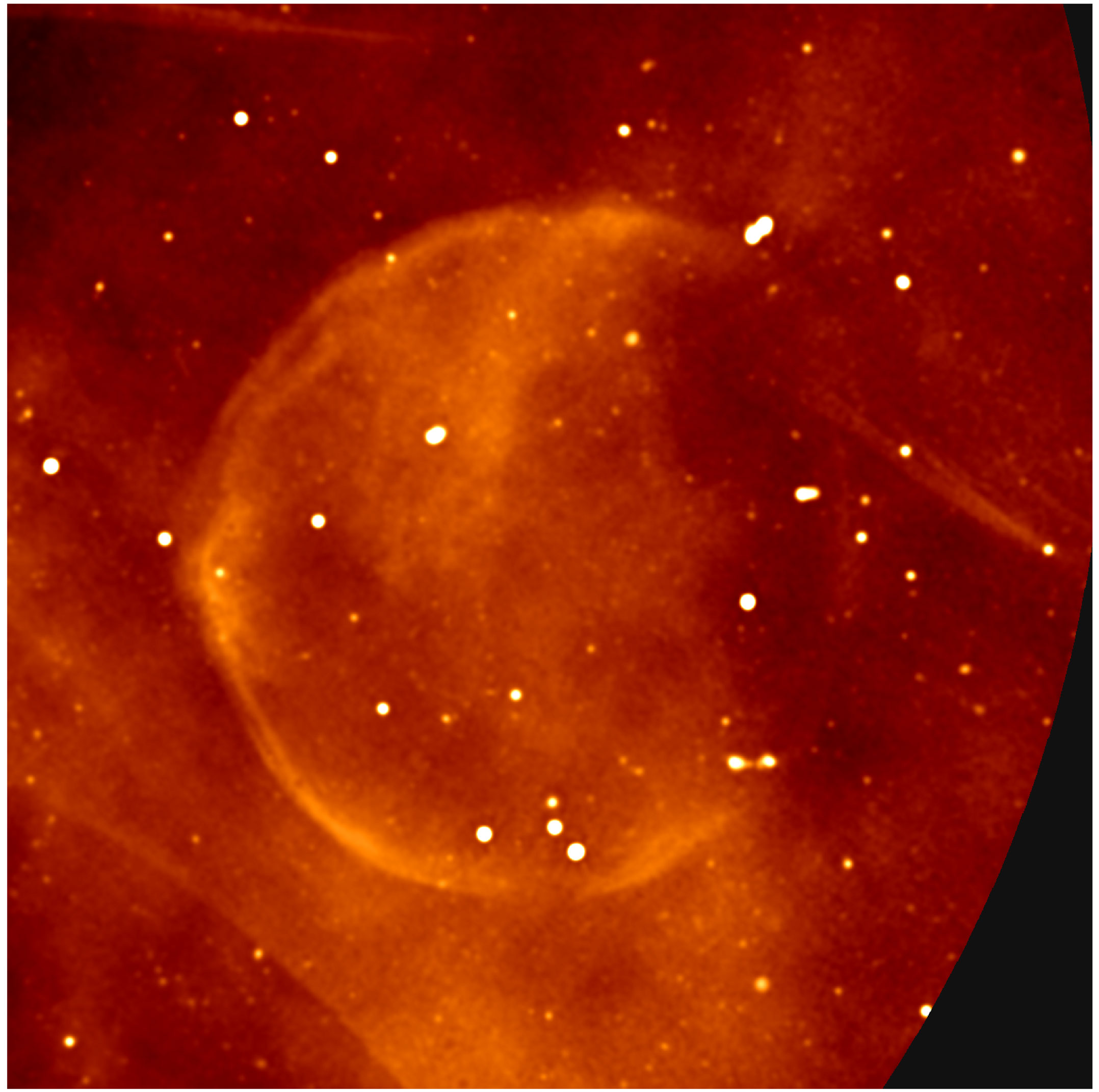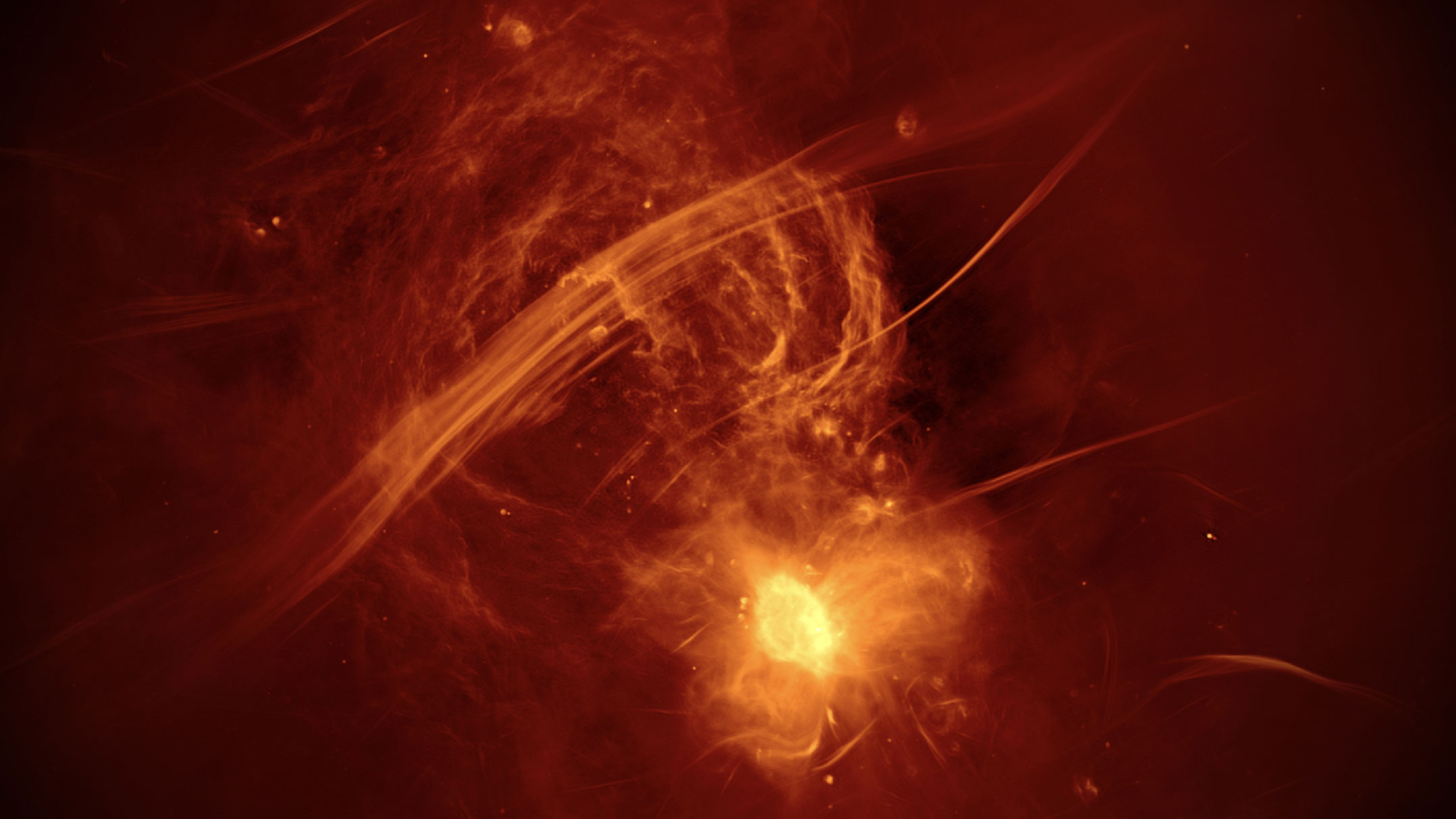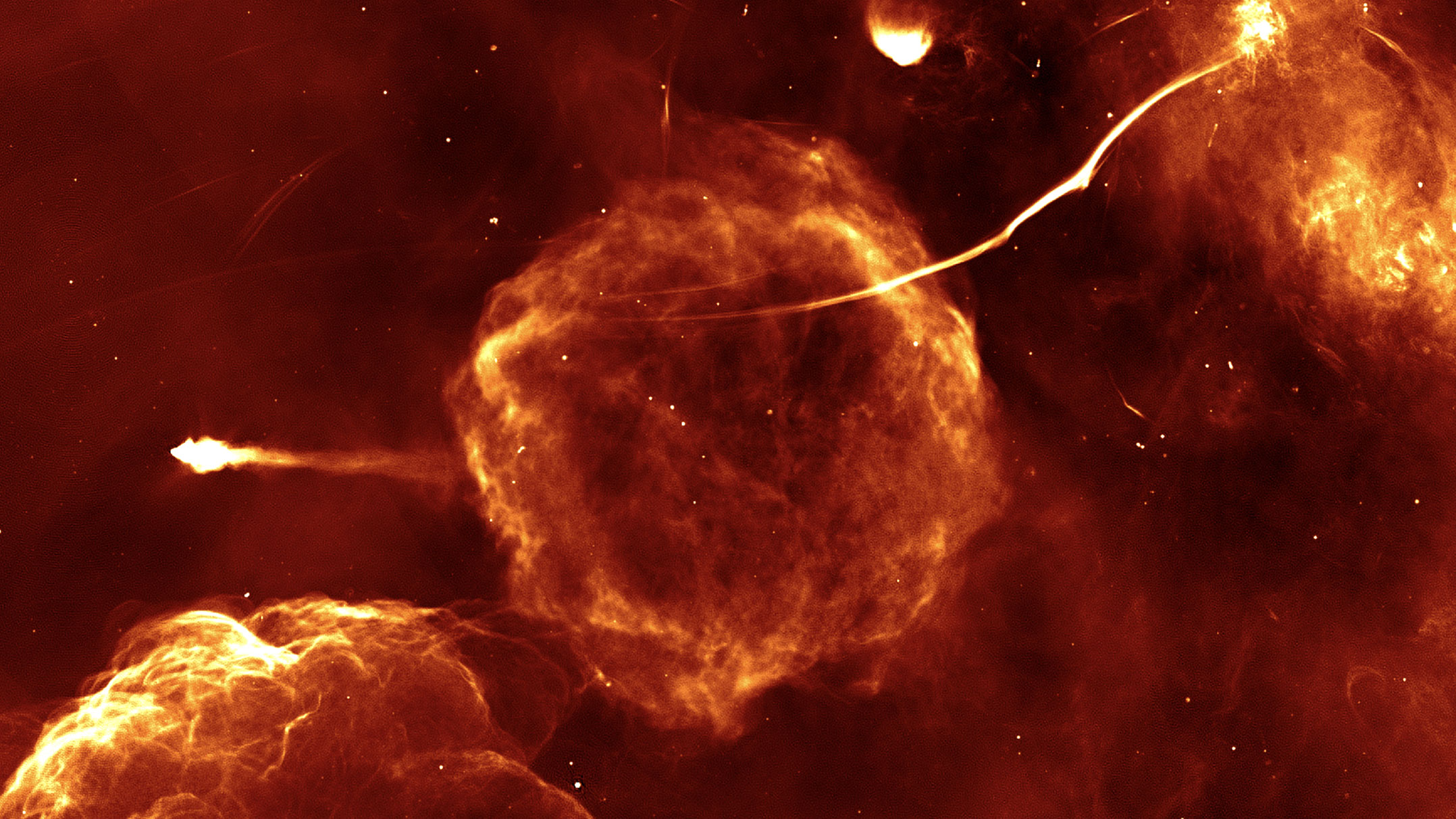
The South African Radio Astronomy Observatory (Sarao) has released a stunning new image taken by the MeerKAT telescope showing the complex centre of our galaxy, the Milky Way.
They show radio emissions from the region with “unprecedented clarity and depth”, Sarao said in a statement.
“The image captures radio emission from numerous phenomena, including ‘outbursting’ stars, stellar nurseries and the chaotic region around the four-million-solar-mass supermassive black hole that lurks in the centre of our galaxy, 25 000 light years from Earth,” it said. (Find the raw image files here.)
“Radio waves penetrate the intervening dust that obscures the view of this region at other wavelengths. MeerKAT’s innovative design, sensitivity, and geographical vantage point have been the keys to producing the remarkable image, which reveals new supernova remnants – the expanding shells of material left behind when massive stars end their lives explosively – including a rare, almost-perfect spherical example, and provides astronomers with the best insight yet into the population of mysterious ‘radio filaments’ found nowhere else.”

MeerKAT is a radio telescope launched in 2018 and consisting of 64 antennas spread over a diameter of 8km in the Northern Cape. It is the most sensitive telescope of its kind in the world and is a precursor to the Square Kilometre Array radio telescope, to be built in South Africa and Australia within the coming decade.
Sarao said the work represents the culmination of three years of detailed analysis of a survey conducted during the telescope’s commissioning phase. Those observations had already led to the iconic inaugural MeerKAT image in 2018 as well as the discovery of a pair of giant radio bubbles, evidence of an explosive outburst from the heart of the galaxy several million years ago. “Now, at last, the image is available in its full complexity for detailed study by astronomers worldwide,” it said.

The new image is based on a mosaic of 20 separate observations using 200 hours of telescope time covering an area of six square degrees (30 times the area of the full moon). The data was consistently processed to deliver an angular resolution of four seconds of arc – the angle subtended by a tall person at a distance of 100km, or by the width of a fine human hair held at arm’s length – resulting in a 100-megapixel scientific image.
“The highly linear features pervading the image are radio-emitting magnetised threads. Up to 100 light years long, these unique structures have defied a conclusive explanation for their origin since discovery over 35 years ago. MeerKAT has discovered many more such filaments than were previously known, and the new data release will allow astronomers to study these objects as a population for the first time,” Sarao said.

“When I show this image to people who might be new to radio astronomy, or otherwise unfamiliar with it, I always try to emphasise that radio imaging hasn’t always been this way, and what a leap forward MeerKAT really is in terms of its capabilities,” said Ian Heywood from the University of Oxford, Rhodes University and Sarao, and lead author of the study
The international team behind the work is publishing the initial science highlights from this image in The Astrophysical Journal. The article is accompanied by a public release of the data to the worldwide astronomical community for their further scientific exploration. – © 2022 NewsCentral Media

